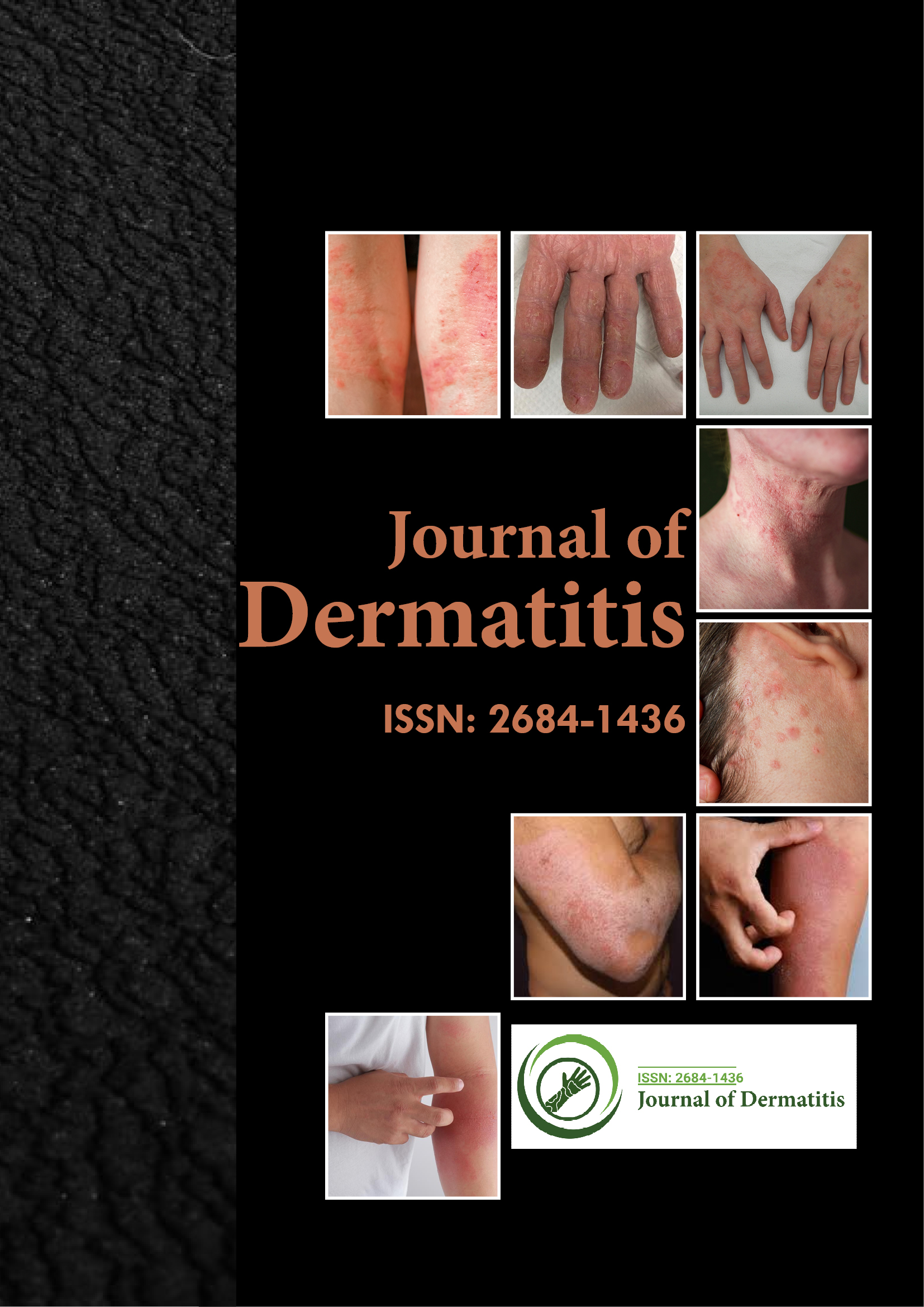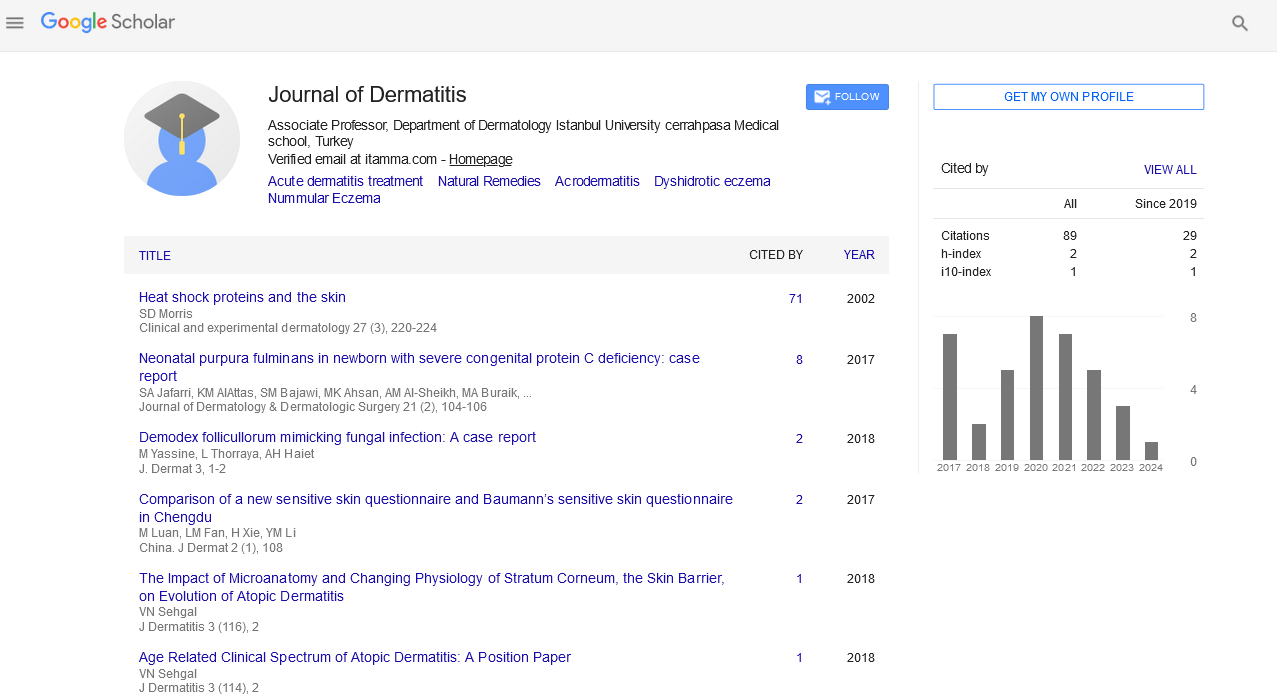Indexed In
- RefSeek
- Hamdard University
- EBSCO A-Z
- Euro Pub
- Google Scholar
Useful Links
Share This Page
Journal Flyer

Open Access Journals
- Agri and Aquaculture
- Biochemistry
- Bioinformatics & Systems Biology
- Business & Management
- Chemistry
- Clinical Sciences
- Engineering
- Food & Nutrition
- General Science
- Genetics & Molecular Biology
- Immunology & Microbiology
- Medical Sciences
- Neuroscience & Psychology
- Nursing & Health Care
- Pharmaceutical Sciences
Opinion - (2025) Volume 10, Issue 1
Severe Scabies Presentations in the Context of Targeted Immune Treatments
Yahia Taher*Received: 25-Feb-2025, Manuscript No. JOD-25-29130 ; Editor assigned: 27-Feb-2025, Pre QC No. JOD-25-29130 (PQ); Reviewed: 13-Mar-2025, QC No. JOD-25-29130 ; Revised: 20-Mar-2025, Manuscript No. JOD-25-29130 (R); Published: 27-Mar-2025, DOI: 10.35248/2684-1436.25.10.270
Description
Scabies is a globally prevalent parasitic skin disease transmitted primarily by direct human contact. Its classical form is usually limited in terms of lesion extent and mite load. However, crusted scabies represents a more aggressive variant with extensive scaling, crusting and a heavy infestation that poses a public health concern due to increased transmissibility.
Traditionally observed in immunocompromised hosts such as individuals with HIV/AIDS, hematologic malignancies, or those on chronic corticosteroids crusted scabies is now reported in patients undergoing biologic therapy. These therapies target immune signaling molecules such as TNF-α, IL-17, IL-23 and others. While they are effective in controlling inflammatory diseases, they also interfere with host defense mechanisms, possibly reducing resistance to ectoparasitic infections.
Clinical features
All patients presented with generalized thick crusting, nail involvement and severe pruritus. Some were initially misdiagnosed with psoriasis flare or eczema, delaying correct treatment. Diagnosis was confirmed through microscopic identification of mites, eggs, or feces from skin scrapings.
Crusted scabies in the context of biologic therapy represents a clinical scenario that requires vigilance. Biologic agents, by targeting selective immune pathways, may compromise the host’s ability to control mite proliferation. The data collected in this review suggest that immune suppression induced by biologics alters the skin’s innate and adaptive defenses.
Immunologic considerations
TNF-α Inhibitors: These agents impair macrophage function and reduce TNF-α mediated inflammation, which plays a role in parasite containment. The suppression of granulomatous response may facilitate mite replication.
IL-17 and IL-23 inhibitors: IL-17 is involved in neutrophil recruitment, a key response to ectoparasites. Inhibition may impair this protective mechanism. Similarly, IL-23 regulates IL-17 production and its blockade may contribute to reduced barrier defense.
Combination therapies: Patients receiving methotrexate or corticosteroids along with biologics appear more susceptible, likely due to synergistic immune suppression.
Diagnostic delay and misinterpretation
Crusted scabies often mimics exacerbations of underlying dermatoses. In several reviewed cases, new scaling or plaques were misinterpreted as worsening psoriasis or eczema, leading to treatment intensification with further immunosuppressants.
This delay not only allowed the infestation to progress but also increased the risk of transmission.
Timely recognition depends on maintaining clinical suspicion, particularly in patients developing widespread scaling or crusting in non-typical distributions during immunotherapy.
Limitations
This review is based primarily on case reports and small series. There is likely underreporting of scabies cases in the context of biologic therapy due to diagnostic difficulty or misclassification. Larger cohort studies and registries are needed to quantify true incidence and identify high-risk subgroups more precisely.
Future research
Prospective studies to evaluate incidence of scabies (classic and crusted) in biologic-treated populations, Assessment of skin barrier and microbiome changes under specific biologic therapies, Development of screening protocols or risk stratification tools before initiating biologics and Investigation of potential prophylactic strategies in patients with past scabies history or institutional exposure.
Crusted scabies, though rare, is an important complication observed during biologic therapy. It is associated with significant discomfort, risk of secondary infection and community spread. Clinicians should remain alert to this possibility when treating patients with biologic agents, particularly those presenting with unexplained scaling, crusting, or widespread pruritus. Early diagnosis, prompt antiparasitic treatment and careful evaluation of ongoing immunosuppression are key to managing this potentially severe dermatological condition.
Citation: Taher Y (2025). Severe Scabies Presentations in the Context of Targeted Immune Treatments. J Dermatitis. 10:270.
Copyright: © 2025 Taher Y. This is an open-access article distributed under the terms of the Creative Commons Attribution License, which permits unrestricted use, distribution, and reproduction in any medium, provided the original author and source are credited.

